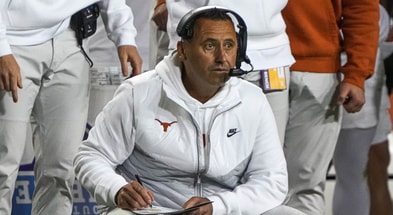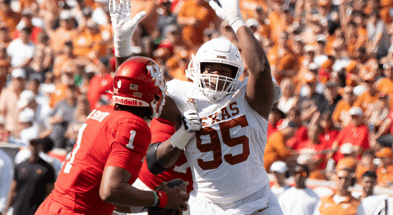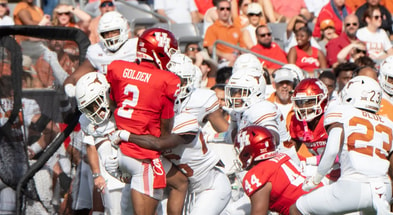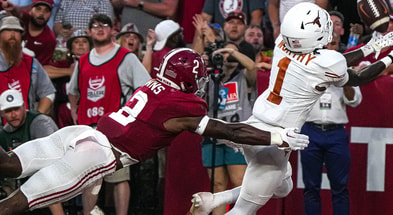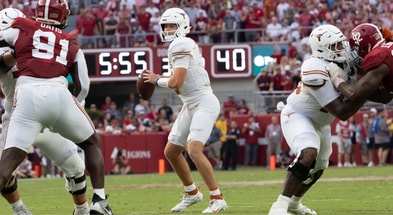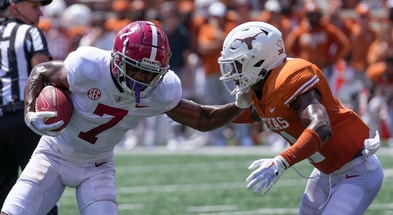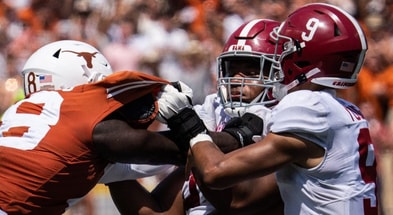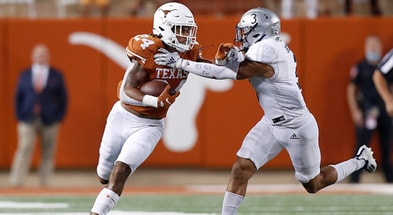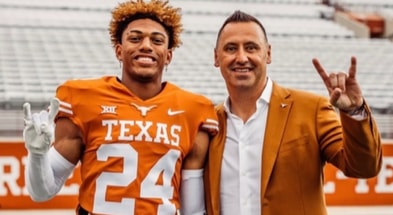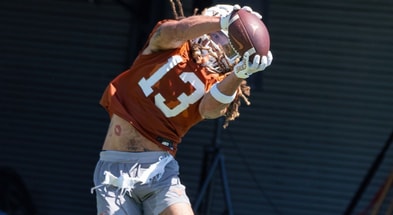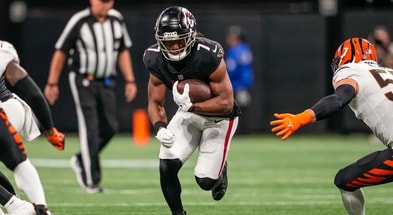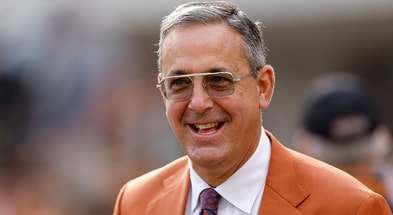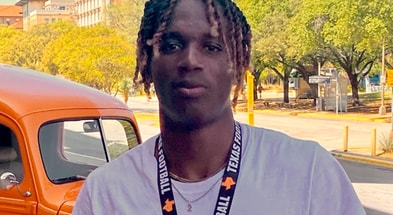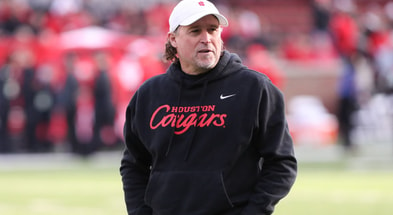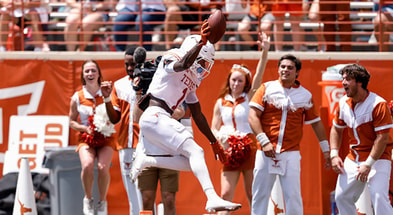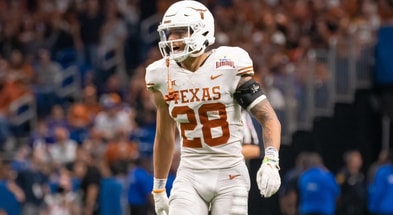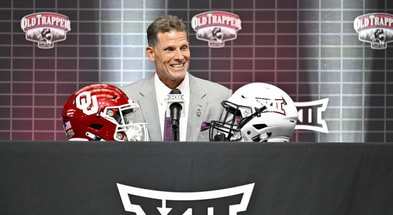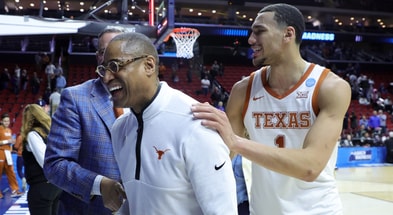Inside the Gameplan: USC

FREE Premium access until August 14 when you sign up, then only $39.99 for every five months! Click here for more details
This is one of the big ones for Tom Herman in year one even though a pure “win or lose” metric probably won’t be the standard for what Texas needs to accomplish in the premier non-conference game. The Longhorns need to avoid an embarrassing blowout like they endured in 2015 in South Bend while a surprising victory like the 2016 triumph over the Fighting Irish would be more likely to prove a reliable omen.
The question marks about the 2017 USC Trojans are much less significant than what Notre Dame was facing in 2016. The Trojan offense has to replace several key pieces but returns Sam Darnold, who’s probably the best player in the nation, along with enough returning starters and young up and comers to put together something fierce.
The Trojan defense loses star cornerback A’doree Jackson but returns a lot of the components that made it a top unit a year ago along with aggressive defensive coordinator Clancy Pendergast. There are a few areas in this game where we should be able to draw some valuable lessons about the 2017 Longhorns but which team finishes the game with more points is probably not going to be one of the main ones. The Trojans are a very tough pre-conference draw for a young team with a troubled past and a new coaching staff.
Can Texas find a Trojan horse on offense?
The Trojan horse analogy is typically used in USC’s favor for some reason, even though it was a combination of the Trojans’ hubris and the Greeks’ cunning use of the trick that led to the destruction of their city. A particularly good scene in that carnage is when Achilles’ son Pyrrhus (Neoptolemus) kills Priam in ruthless fashion. Priam attempts to lecture Pyrrhus on how his father Achilles showed mercy and restored Hector’s body to Priam while Pyrrhus is dragging the king’s old body through his own son’s blood to the altar, only to have the young Greek respond…
“Then you can be messenger, carry the news to my father, to Peleus’s son: remember to tell him of degenerate Pyrrhus, and of my sad actions: now die.”
…before stabbing the old Trojan to death. It’d be kind of shocking if we saw a similar scene play out with the young Longhorn offense brutally ruining USC’s year in this early season contest. We might see something more akin to the Trojan horse though, with the Longhorns managing to sneak out with a victory as a result of guile and Trojan hubris.
You may remember that I’ve made the 2016 Penn State Nittany Lions offense a frequent reference point both for what the Texas scheme could look like in year one under Tom Herman as well as the type of play the Longhorns would like to get from Shane Buechele. The Lions had a few features Texas is still searching for, like a stud running back in Saquon Barkley and a dual-threat tight end in Mike Gesicki. Their OL was inferior to the Texas unit though and QB Trace McSorley was a nice approximation of what Buechele could be considering he had 525 rushing yards and 3614 passing yards while playing in the Big 10 at 6’0” 205.
Handling Penn State’s offense required that the Trojans be able to match up with their star receiver, Chris Godwin, who had 982 receiving yards and 11 touchdowns on the year. Penn State had burned teams all year long throwing deep early and often from their spread sets and the Trojans responded by regularly bracketing the solo-side receiver primarily with one of two coverages.
A cover 2 zone that dropped their “predator” (what they call one of their DE/OLBs) Porter Gustin underneath while the corner played over the top:
And a cover 4 “cone” bracket with the safety helping on inside routes from the receiver (while also helping against the run).
For much of the year USC just played man coverage on everyone but they had to send some help against the Penn State receivers or risk getting blown away by the Lions’ vertical passing firepower. Texas needs to gain a similar effect from the presence of Collin Johnson on the boundary and more if possible.
The cover 2 bracket is ideal for running the ball against since it rotates one of the Trojans’ better players up front, “predator” Porter Gustin (think a bigger, more skilled Breckyn Hager), back into the boundary while dropping a safety down to replace a linebacker. It’s a coverage play and not designed to do more than effectively bracket the most easily accessible receivers.
The “cone” bracket is one of the more popular in college football and it draws its strength from the play of the safety who waits to rob inside routes by that “X” receiver and then can be a “plus one” defender to stop the run. The design of this coverage allows them to split the difference between gaining help on a receiver and bringing extra help to stop the run.
The problem the Trojans had against Penn State that perhaps Texas could also exploit is in defending runs to the field with their nickel. USC was clearly concerned about the Lions’ passing game in general and would tend to mix in fairly conservative coverages to the field as well as to the boundary. Check out how late the secondary support is on this split zone run by Penn State:
This is why Tom Herman loves the split zone play, it’s simply one of the best in the game for attacking nickel defenses.
Because the nickel is hanging in the passing window to the slot for an extra beat, he’s late to make the play when the sam DE/OLB spills the run outside. The sam was probably supposed to box that play in for the linebackers but late arriving run support and an over-stressed nickel were reoccurring themes for the Trojan defense in this game. Texas isn’t the only team that struggles to consistently get their run fits right against good spread run games.
Texas can also mimic the effects of this play with “dart” or counter, if they can’t find a TE to execute these blocks, with a tackle pulling to kick out while everyone else blocks down. The idea is that Texas wants to force USC to play off on their receivers and try to control the run with an honest front and then make steady gains running the ball downhill. USC has good players on their DL and in the LB corps but if Texas can get “one on one” type matchups up front for Connor Williams and Patrick Vahe or outside for Collin Johnson then the results should put some points on the board.
What Texas can’t afford is regularly facing passing downs where Pendergast can bring exotic pressures from their 2-4-5 front of the sort that ruined Sam Ehlinger’s burnt orange debut in Texas’ own spring game. Porter Gustin and DL Rasheem Green will chew up and spit out the right side of the Texas OL if allowed to work stunts and pin their ears back all night.
Stopping Sam Darnold
The USC defense is a good one and if Texas has to score 30-40 points to win this game then they probably can’t pull off a win. A victory will depend on Orlando’s defense against Heisman frontrunner Sam Darnold.
It seems to have become pretty popular on the interwebs these days to dismiss Darnold as being overhyped. Allow me to remind everyone that there have been many other occasions in which Texas faced a hyped opponent early in the season that fans were eager to dismiss only to later begrudgingly accept that they were truly worthy foes. The 2005 and 2006 Buckeyes come to mind, as well as Sam Bradford in 2008 and Notre Dame in 2015 and 2016.
Texas won some of those games, but challengers like the 2005 Ohio State LB corps or the recent Fighting Irish offenses still gave Texas all they wanted and more. I’m pretty sure that Sam Darnold will find his place amongst those opponents when this game is over and done, even if Texas manages to eek out a victory.
I’ve written about the Heisman candidate and you can read up here but I’ll give a brief scouting report on the USC offense and signal-caller. He’s basically the ideal, modern pro-style quarterback and a rough approximate for what Sam Ehlinger could become down the line. USC makes pretense of being a smashmouth, downhill offense and they may very well have success running the ball on Texas, but when the chips are down they accept their identity as an elite dropback team much like 2008-09 Texas or 2016 Clemson.
They use Darnold as an adjunct to their run game both with the standard zone-read play (he ran for 291 yards last year at 5.2 ypc) and with bubble screens and other quick pass options attached to their runs. In true pro-style fashion they are mostly an outside zone team while their passing game is a standard assortment of west coast concepts from both three-wide and double tight end sets. In the passing game they love to combine Darnold’s lightning quick release with the propensity of college linebackers and safeties to be iffy in closing windows between the hash marks:
As you can see in this clip, he’s very good at navigating pressure in the pocket when clever zone-blitzing teams like Utah (same defensive school as Orlando, btw) get penetration. At 6’4” 220 with legit athleticism and great footwork, he’s pretty difficult to take down even if you beat their OL which is clearly well drilled in pass protection. If you want to drop back and play two-deep coverage, he’s cool with that as well:
Here he is executing the zone-read…
Utah has this beat on the chalkboard and then Darnold jukes their DE and with a few steps has fallen forward for about nine yards. It may not look like he’s moving quickly but that just makes him all the more dangerous when he makes a sudden move and blows by you or through you to set up second and one.
I’m just trying to warn y’all, this is one of the best college quarterbacks I’ve ever seen. I took all those clips from just one game, he’s like Colt McCoy from back in the day (only huge) and makes amazing plays every week that don’t have good, preventative solutions.
For Texas, the formula for stopping the Trojans will be the same as it is virtually every week in the Big 12, just more difficult. Make sure you get hats in the right places against the run game and then win with pressure up front. The USC RB, Texan transplant Ronald Jones II, is as dangerous as feared when Texas missed on him and he can break loose and do damage but their overall run game isn’t overwhelming enough to bowl over top tier defensive fronts. The Longhorn front should be athletic and sturdy enough to give them problems IF they play with sound alignments and good fundamentals.
From there, Texas needs to get good pressure on Darnold. Ideally inside pressure that flushes him out to guys like Roach or Malik, but any good pressure that keeps him from being able to pick on safeties and linebackers with quick reads and tosses over the middle is essential. I think overload blitzes that keep Malik back and able to chase Darnold down after he’s flushed are probably Texas’ best bet here.
Everyone is matched up in man coverage with Malik responsible for the middle or the no. 3 receiver (the running back here). Hopefully Texas can force the RB to stay in protection to stop their blitzes and thus free up Malik to spy Darnold, allowing the predator’s freakish abilities to come to bear against the freakishly skilled Trojan QB. That’s a battle we’ve seen Malik win before against mobile signal-callers.
If this game is decided by USC’s ability to execute their passing game against Texas’ ability to cover then the Trojans will win big. If Orlando can break down Darnold’s protections and make it a contest of athleticism between the sophomore QB and Texas’ pass-rushers then Texas can definitely win some battles and keep the offense in the game. USC is starting first-year starters at either tackle spots, which is a big boost in this regard.
All in all Texas is in for a serious challenge in this game, trying to put together an A+ effort in year three of a new system on the road against a team with elite talent. There’s a roadmap to victory here but the real goal here is for USC fans to walk home saying, “well we won, but that Texas team was no joke.”







